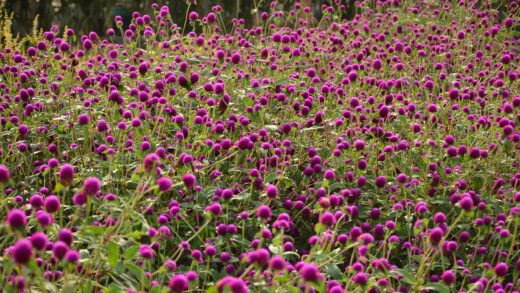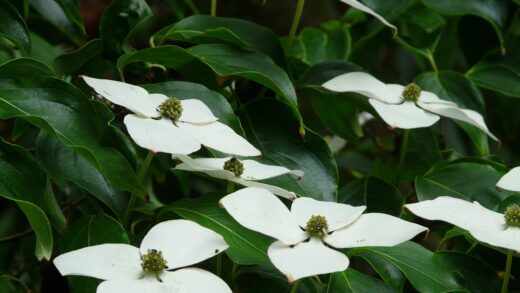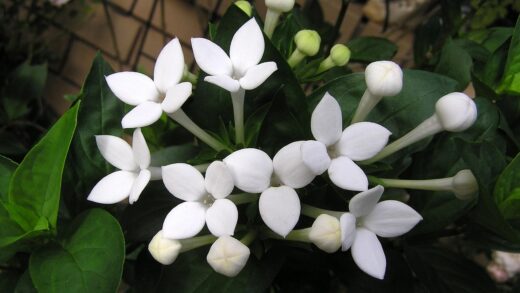The Chinese empress tree is renowned for its astonishingly rapid growth, a characteristic that is intrinsically linked to its water requirements. To sustain its development of large leaves and speedy extension of branches, the tree requires a consistent and ample supply of water, especially during its formative years. Understanding and effectively managing the irrigation of Paulownia tomentosa is therefore a cornerstone of its successful cultivation. While a mature tree can exhibit considerable drought tolerance, providing the right amount of water at the right times throughout its life cycle is key to maximizing its health, beauty, and structural integrity.
During the initial establishment phase, which typically spans the first two to three years after planting, the empress tree is particularly dependent on regular irrigation. Its root system is still developing and exploring the surrounding soil, making it vulnerable to drying out. In this period, the goal is to keep the soil consistently moist but not waterlogged, as oversaturation can be just as detrimental as drought, leading to root rot and other fungal diseases. Deep, infrequent watering is the most effective strategy, encouraging the roots to grow deeper into the soil profile in search of moisture, which ultimately builds a more resilient and self-sufficient tree.
The frequency and volume of watering needed will be dictated by a combination of factors, including soil type, climate, and recent weather patterns. Sandy soils, for example, drain quickly and will require more frequent watering than heavy clay soils, which retain moisture for longer. Similarly, hot, windy weather will increase the rate of evapotranspiration, necessitating more supplemental irrigation than cool, overcast periods. A practical way to assess the need for water is to manually check the soil moisture by digging a small hole or using a soil moisture meter a few inches away from the base of the tree.
As the empress tree matures and its root system becomes extensive and deep, its reliance on supplemental irrigation diminishes significantly. A well-established tree can often sustain itself with natural rainfall in many temperate climates, demonstrating impressive drought tolerance. However, even mature trees will benefit from occasional deep watering during prolonged periods of drought or extreme summer heat. Providing this supplemental water during stressful periods helps the tree maintain its lush foliage and overall vigor, preventing premature leaf drop and reducing its susceptibility to pests and diseases.
Watering newly planted trees
The period immediately following planting is the most critical time for watering a Chinese empress tree. The transplanting process inevitably causes some stress and damage to the root system, temporarily reducing its ability to absorb water. To compensate for this and to help the tree recover and establish in its new location, it is vital to provide abundant and consistent moisture. The very first step after placing the tree in the ground and backfilling the soil is to water it thoroughly, allowing the water to soak in deeply and settle the soil firmly around the roots, eliminating any air pockets.
More articles on this topic
For the first few weeks after planting, the soil around the root ball should never be allowed to completely dry out. You should plan on watering the new tree every two to three days, unless there has been significant rainfall. The aim is to deliver a slow, deep soaking rather than a quick, superficial spray. Using a soaker hose coiled around the base of the tree or letting a regular hose run on a slow trickle for an extended period are excellent methods for achieving deep saturation. This ensures that the water penetrates down to the full depth of the root ball and encourages downward root growth.
As the tree begins its first growing season in its new home, you can gradually adjust the watering schedule. After the first few weeks, a deep watering once a week is often sufficient for most soil types and climates, but you must continue to monitor the conditions. A simple test is to insert your finger into the soil near the trunk; if the soil feels dry two to three inches below the surface, it is time to water again. This hands-on approach is more reliable than adhering to a rigid schedule, as it allows you to respond directly to the tree’s actual needs.
It is also crucial to avoid the common mistake of overwatering. While consistent moisture is essential, waterlogged soil deprives the roots of oxygen, which is necessary for their function and survival. This can lead to root rot, a serious condition that can kill a young tree. Signs of overwatering can paradoxically mimic those of underwatering, including wilting and yellowing leaves. Therefore, always check the soil moisture before applying more water to ensure that you are not creating a saturated, anaerobic environment for the roots. Proper drainage, both in the soil itself and away from the planting site, is paramount.
Irrigation for established trees
Once a Paulownia tomentosa has been in the ground for two to three full growing seasons, it is generally considered to be established. By this stage, its root system has expanded well beyond the original planting hole and has penetrated deep into the soil profile. This extensive root network makes the tree much more efficient at finding and absorbing water, significantly increasing its resilience to dry conditions. In regions with regular rainfall, an established empress tree may require little to no supplemental irrigation for much of the year.
More articles on this topic
However, the term “drought-tolerant” does not mean “drought-proof.” During extended periods of little to no rain, especially when combined with high temperatures and wind, even a mature tree can experience stress. Signs of water stress in an established tree include wilting leaves during the hottest part of the day, a scorched appearance on leaf margins, premature yellowing of leaves, and a general lack of vigor. When these signs appear, it is a clear indication that the tree would benefit from a deep, supplemental watering to replenish the soil moisture reserves.
When irrigating a mature tree, it is important to apply the water over its entire root zone, which can be surprisingly large. The roots of a large tree typically extend out to the edge of its canopy, known as the dripline, and often well beyond. Therefore, simply watering at the base of the trunk is insufficient. A more effective method is to use a sprinkler or a soaker hose placed around the dripline of the tree, allowing the water to soak in slowly and deeply over several hours. This ensures that the water reaches the vast network of feeder roots that are most active in water absorption.
The goal when watering an established tree during a drought is to mimic a heavy, natural rainfall event. A single, deep irrigation that moistens the soil to a depth of at least 12 to 18 inches is far more beneficial than several shallow waterings. This encourages the tree to maintain its deep root system, whereas frequent, light watering can promote the growth of shallow roots that are more vulnerable to heat and drought stress. By understanding and responding to the needs of the established tree, you can ensure its continued health and spectacular appearance even through challenging weather conditions.
The role of soil and mulch
The type of soil in which the empress tree is planted plays a significant role in its water requirements and how it should be irrigated. Sandy soils are composed of large particles, which creates large pore spaces, allowing water to drain through very quickly. While this provides excellent aeration, it also means that sandy soils have a low water-holding capacity and dry out rapidly. Trees planted in sandy soil will need to be watered more frequently than those in other soil types to ensure they have a consistent supply of moisture.
In contrast, clay soils are made up of very fine particles with small pore spaces, which causes them to drain very slowly and retain water for long periods. While this means they require less frequent watering, they are also prone to becoming waterlogged and compacted, which can starve roots of oxygen. When irrigating trees in clay soil, it is crucial to apply water slowly to allow it to be absorbed rather than run off, and to give the soil enough time to dry out partially between waterings to prevent oversaturation. The ideal soil is a loam, which offers a balanced combination of sand, silt, and clay, providing both good drainage and good water retention.
Mulching is one of the most beneficial practices for managing soil moisture and reducing the need for frequent irrigation. Applying a 2-4 inch layer of organic mulch, such as wood chips, shredded bark, or compost, over the root zone of the empress tree has multiple benefits. The mulch acts as a physical barrier, slowing down the evaporation of water from the soil surface, thus keeping the soil moister for longer. It also helps to moderate soil temperatures, keeping the roots cooler in the summer and warmer in the winter.
Furthermore, as organic mulch breaks down over time, it enriches the soil with organic matter, which improves its structure and water-holding capacity. Soil that is rich in organic matter acts like a sponge, absorbing water during rainfall or irrigation and releasing it slowly to the tree’s roots as needed. When applying mulch, it is important to keep it a few inches away from the tree’s trunk to prevent moisture from accumulating against the bark, which could lead to fungal diseases or rot. This simple technique is a powerful tool for creating a water-wise and healthy environment for your tree.
Seasonal watering considerations
Watering needs for the Chinese empress tree are not static; they fluctuate significantly with the changing seasons. The highest demand for water occurs during the peak of the growing season, in late spring and summer. This is when the tree is actively producing new leaves, extending its branches, and transpiring a large amount of water through its massive leaves. During this period, especially in hot and dry weather, you must be most vigilant about monitoring soil moisture and providing supplemental water as needed to support this vigorous growth and prevent stress.
As autumn approaches, the tree’s growth rate slows down in preparation for dormancy. The days become shorter and cooler, reducing the rate of evaporation from the soil and transpiration from the leaves. Consequently, the tree’s water requirements begin to decrease. You should gradually taper off irrigation in early to mid-autumn. This reduction in water signals to the tree to begin hardening off its new growth in preparation for the cold winter months. Continuing to water heavily late into the season can promote succulent, late-season growth that is highly susceptible to frost damage.
During the winter, when the deciduous empress tree is dormant and has lost its leaves, its need for water is minimal. Natural precipitation is usually sufficient to maintain adequate soil moisture in most climates. It is generally not necessary to provide supplemental water to a dormant tree unless you are experiencing an unusually dry winter, particularly in the case of a recently planted tree whose roots are still establishing. If the ground is not frozen and there has been a long dry spell, a single deep watering during a warmer period can be beneficial.
With the arrival of spring, the cycle begins anew. As the ground thaws and temperatures rise, the tree’s metabolic processes restart, and its demand for water increases as it prepares to push out new leaves and flowers. This is a good time to check soil moisture levels and resume a regular watering schedule if winter precipitation has been scarce. Ensuring the tree has adequate moisture in the spring is crucial for fueling its initial, explosive burst of growth and supporting a spectacular floral display.


















